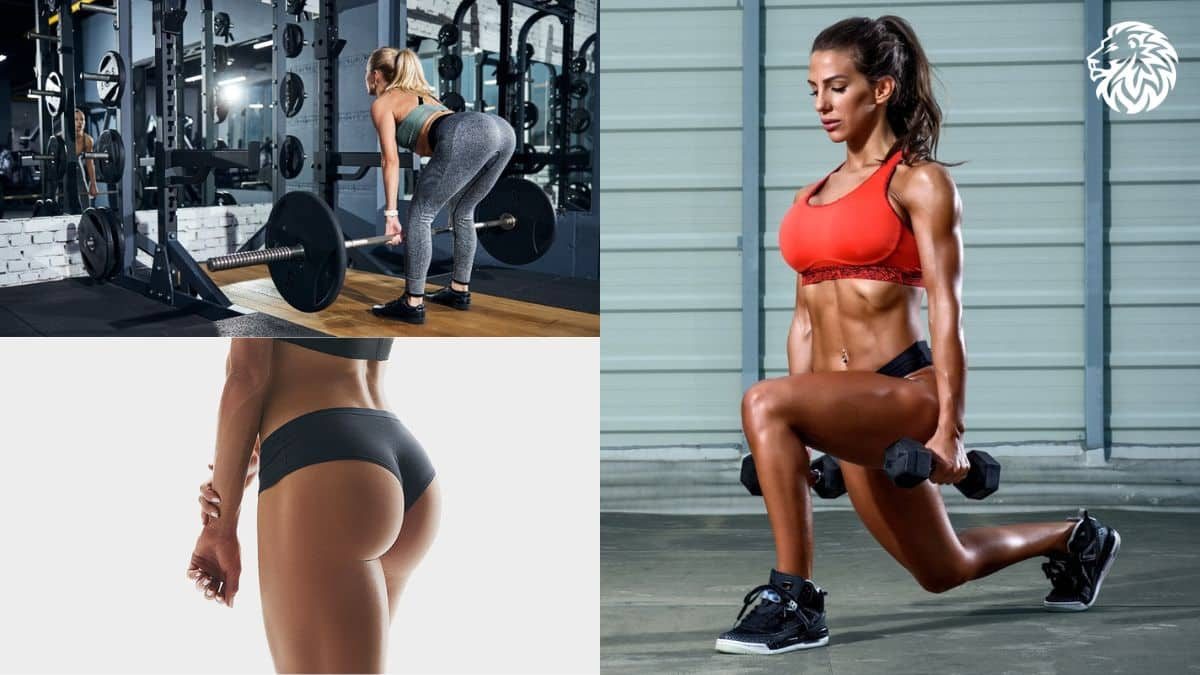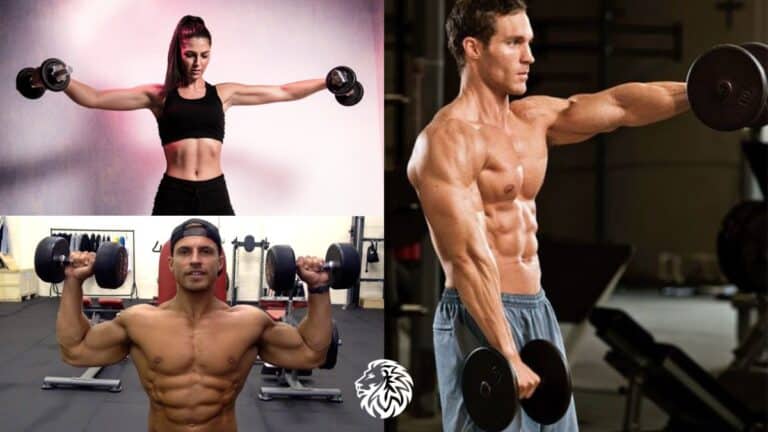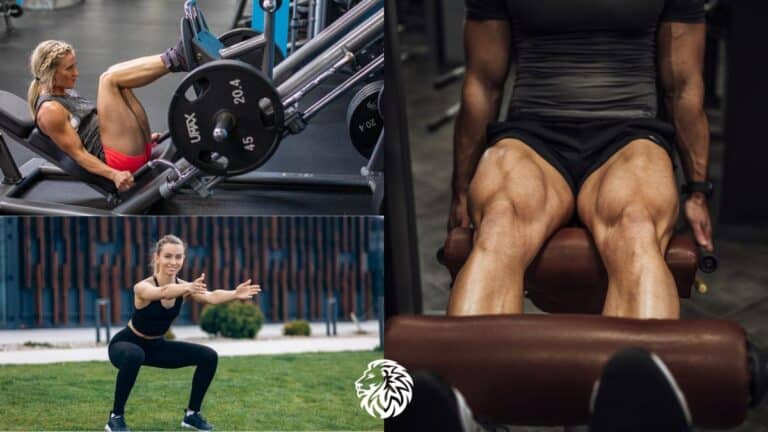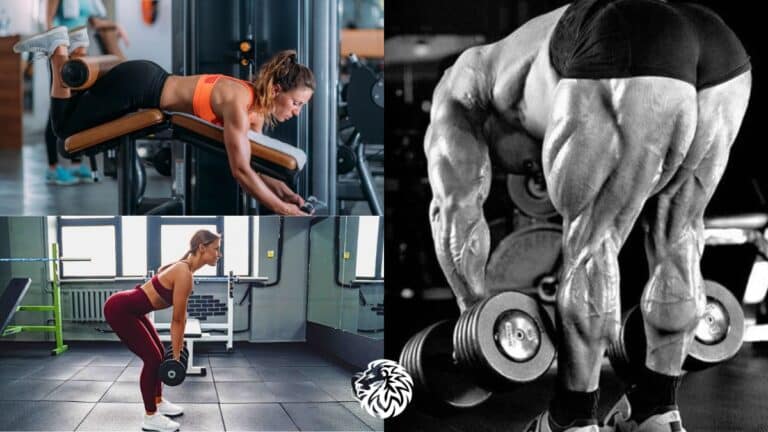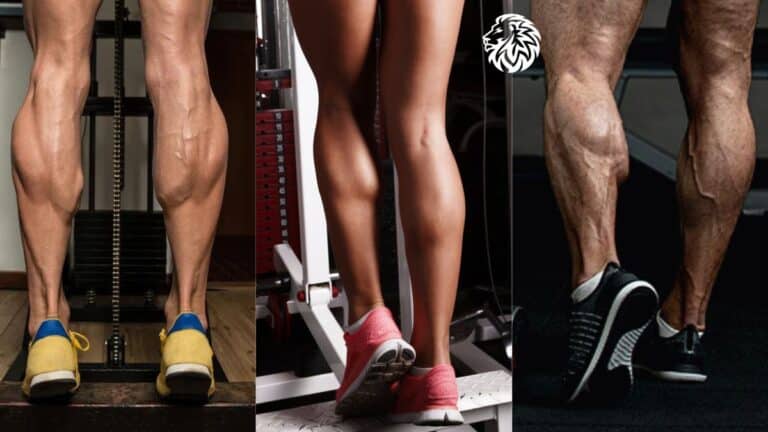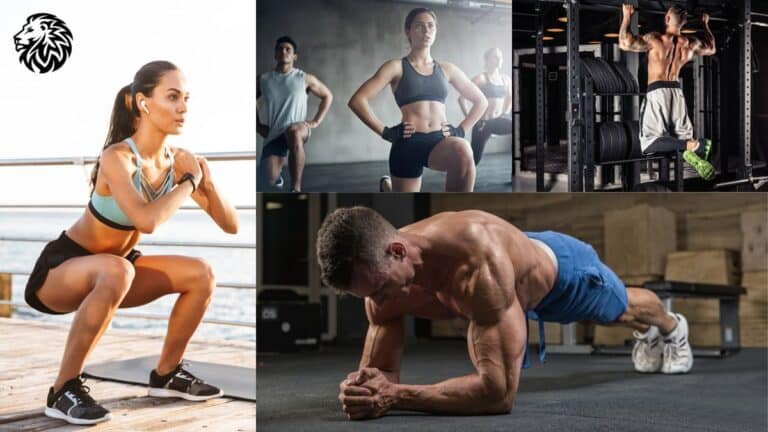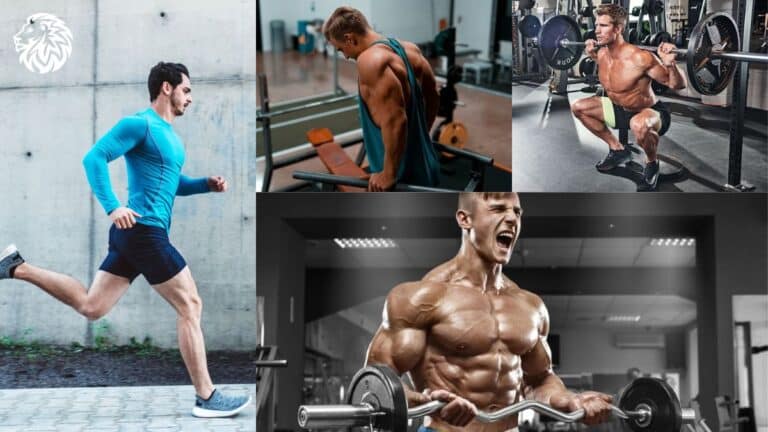Welcome to our in-depth exploration of the best glute workouts at the gym, a crucial aspect of your fitness routine that often doesn’t receive the attention it deserves. Strong and well-toned glutes are not just important for aesthetic appeal; they play a pivotal role in enhancing overall body strength, improving posture, and contributing to a balanced physique. Whether you’re a fitness enthusiast or someone just embarking on their fitness journey, understanding and effectively working out your gluteal muscles is fundamental.
In this article, we delve into various glute strengthening exercises and techniques that are both effective and scientifically backed. Drawing upon the expertise of seasoned fitness professionals and the latest research in exercise physiology, we aim to provide you with a comprehensive guide that is not only insightful but also practical and applicable in your daily gym routine. Our focus is on delivering content that you can trust, with each recommendation aimed at helping you achieve your fitness goals in a safe, efficient, and sustainable manner. Let’s embark on this journey to unlock the full potential of your glute workouts and transform the way you approach your fitness regimen.
Understanding Glute Muscles
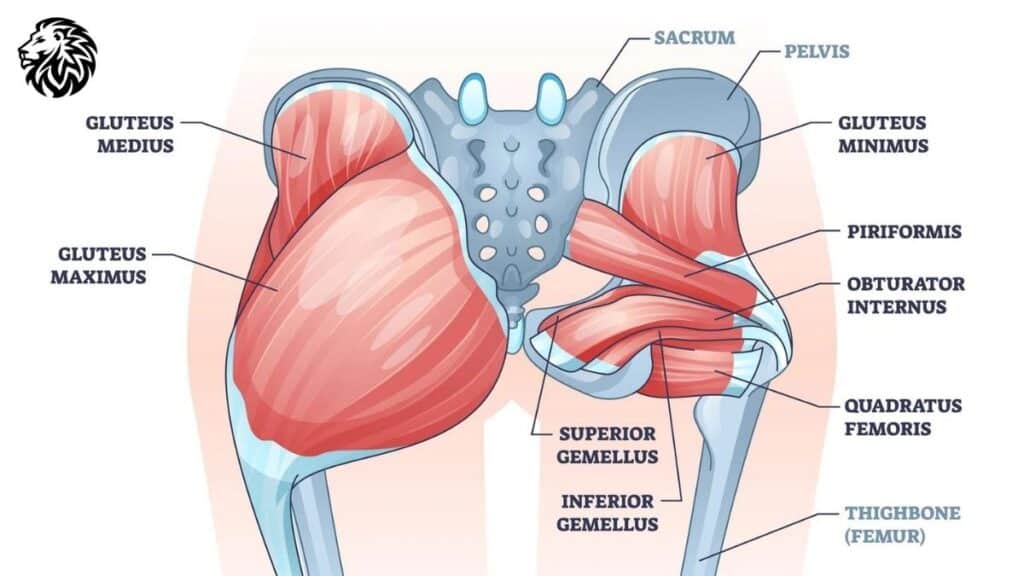
The journey to effective glute workouts begins with a foundational understanding of the gluteal muscles, a powerful group of muscles that form a key part of your lower body. Predominantly, the glutes consist of three major muscles: the gluteus maximus, gluteus medius, and gluteus minimus.
- Gluteus Maximus: This is the largest and most visible of the gluteal muscles. It plays a crucial role in hip extension, outward rotation, and straightening out the pelvis during movements. This muscle is engaged during activities like climbing stairs, standing up from a sitting position, and lifting heavy objects.
- Gluteus Medius and Minimus: These muscles are situated under the gluteus maximus and are essential for hip stabilization, particularly when you’re standing on one leg. They also assist in the movement of the leg away from the body’s midline, a motion known as hip abduction.
The role of glutes extends far beyond just providing a shape to your lower body. They are central to your body’s alignment and balance. Strong glutes contribute significantly to your overall health and fitness in several ways:
- Posture Improvement: Strong glute muscles support the lower back, reducing the risk of back pain and strain, a common issue in today’s sedentary lifestyle.
- Enhanced Athletic Performance: For athletes, well-conditioned glutes are vital for speed, agility, and power. They are the powerhouse behind most lower body movements.
- Injury Prevention: Robust glutes ensure proper hip and knee alignment, which can help prevent lower body injuries. This is particularly important for runners and other athletes.
- Improved Daily Functional Movements: From walking to jumping and lifting, the glutes are involved in a wide range of daily activities. Strong glutes make these activities easier and more efficient.
Understanding these muscles’ structure and function lays the groundwork for effective workout routines that not only enhance the appearance of your lower body but also contribute to your overall health and well-being. As we progress through this guide, we will explore how to effectively activate and strengthen these vital muscles through specific exercises and techniques.
Benefits of Glute Workouts
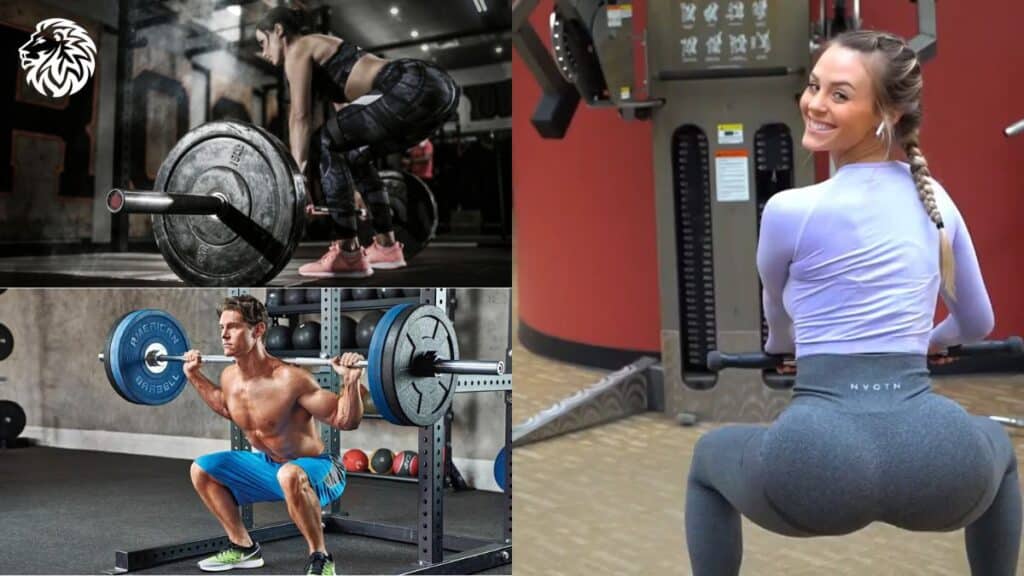
Embarking on a dedicated glute workout regimen offers a multitude of benefits that extend beyond the gym. Let’s delve into these advantages, supported by expert opinions and research, to understand why focusing on your glutes is a key aspect of your fitness journey.
- Posture Improvement: One of the primary benefits of strong glute muscles is the enhancement of posture. The glutes play a significant role in stabilizing the pelvis and aligning the hips, spine, and legs. According to physical therapists and fitness experts, well-toned glutes help maintain an upright posture, reducing the strain on the lower back and decreasing the risk of posture-related problems. This is particularly beneficial in today’s increasingly sedentary lifestyle where many people spend prolonged periods sitting.
- Injury Prevention: Strong glutes are essential for maintaining proper alignment and movement of the hips, knees, and ankles. Research in sports medicine indicates that weak glutes can lead to a range of injuries, including anterior cruciate ligament (ACL) injuries, shin splints, and even lower back pain. By strengthening these muscles, you provide better support for your lower body, reducing the stress on knees and ankles during both daily activities and intense physical exercises.
- Enhanced Athletic Performance: Athletes across various sports can attest to the importance of glute strength for performance. The glutes are the powerhouse of the lower body, essential for explosive movements like sprinting, jumping, and changing directions. Strength and conditioning coaches emphasize that strong glutes contribute to faster running speeds, higher jumps, and more powerful movements. This is corroborated by numerous studies that link glute strength with improved athletic performance.
Expert opinions often highlight the role of glutes in overall body mechanics. Renowned trainers and physical therapists point out that the glutes are not just about aesthetics; they are crucial for the functional movement of the entire body. Effective glute workouts, therefore, can lead to a significant improvement in overall strength, stability, and endurance, which is beneficial both in and out of the gym.
By focusing on these muscles, you’re not just working towards a more toned appearance, but you’re also investing in your long-term health and physical capabilities. In the following sections, we will explore the specific exercises and techniques that can help you achieve these benefits, ensuring your time spent on glute workouts is both efficient and effective.
Pre-Workout Considerations
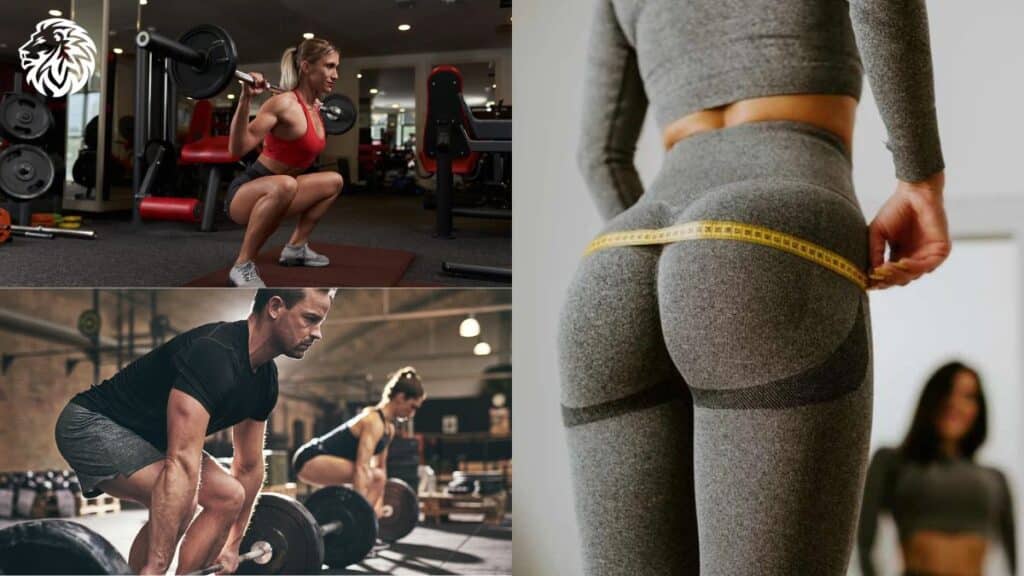
Before diving into the glute workouts, it’s essential to prepare your body adequately to maximize the benefits and minimize the risk of injury. This section covers the crucial aspects of pre-workout considerations, focusing on warm-up exercises and tailoring your workout to fit individual fitness levels and goals.
- The Importance of Warm-Up Exercises:
- Purpose of Warm-Up: A proper warm-up routine increases blood flow to the muscles, enhances flexibility, and prepares your body for the stress of exercise. It’s especially important for glute workouts as these muscles can be dormant due to prolonged sitting.
- Effective Warm-Up Techniques: Incorporate dynamic stretches and light cardio exercises. Movements like leg swings, walking lunges, and light jogging are great for activating the glute muscles. Fitness experts recommend spending at least 5-10 minutes warming up.
- Targeted Glute Activation: Activate your glutes with specific exercises like glute bridges or donkey kicks. This ensures that these muscles are engaged and ready to work during your workout.
- Tailoring Glute Workouts to Individual Fitness Levels and Goals:
- Assessment of Fitness Levels: Recognize your current fitness level. Beginners might need to start with basic exercises, while more experienced gym-goers might opt for advanced variations or heavier weights.
- Setting Realistic Goals: Whether your goal is to strengthen, tone, or increase the size of your glutes, set clear and achievable objectives. This helps in designing a workout plan that aligns with your aspirations.
- Personalizing Your Workout Plan:
- For Beginners: Start with bodyweight exercises like squats and lunges to build foundational strength. Focus on form and technique.
- For Intermediate Levels: Incorporate resistance with bands or weights. Increase the intensity and volume of workouts gradually.
- For Advanced Individuals: Explore more challenging exercises like weighted hip thrusts or single-leg deadlifts. Focus on progressive overload to continue building strength and size.
- Expert Guidance: Consider consulting with a fitness trainer, especially if you’re new to gym workouts or have specific fitness goals. A tailored plan can significantly improve your outcomes and reduce the risk of injury.
By giving due importance to warm-up routines and personalizing your workout plan according to your fitness level and goals, you can ensure a more effective and safer workout experience. This approach not only prepares your body for the demands of the workout but also aligns the exercises with your specific fitness journey, paving the way for more targeted and satisfying results.
Best Glute Workouts at the Gym
This section is dedicated to guiding you through some of the most effective glute workouts you can perform at the gym. For each exercise, we provide detailed descriptions, step-by-step instructions, and helpful tips to ensure that you perform them safely and effectively, maximizing their benefits.
Squats
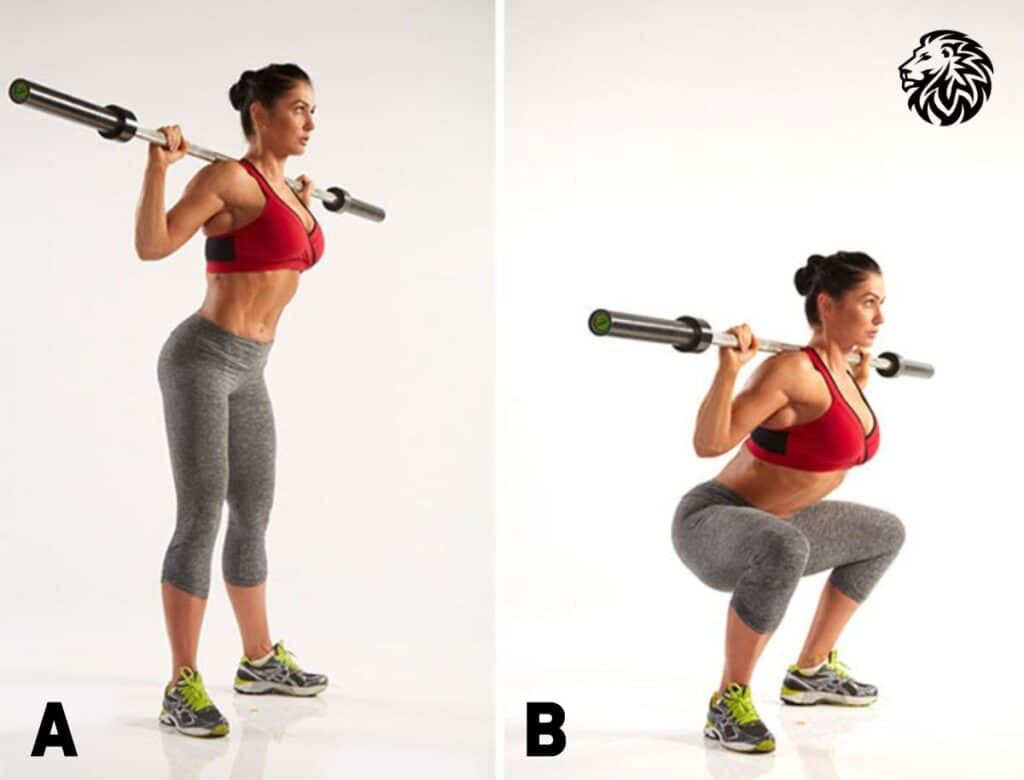
- Description: Squats are a fundamental exercise for targeting the gluteus maximus, along with engaging the thighs and core.
- Execution: Stand with your feet shoulder-width apart, toes slightly turned out. Bend your knees and lower your body as if sitting in a chair, keeping your back straight and chest up. Lower down until your thighs are parallel to the floor, then push through your heels to return to the start position.
- Tips: To increase the intensity, add weights like a barbell or dumbbells. Ensure your knees do not go over your toes to prevent injury.
Lunges
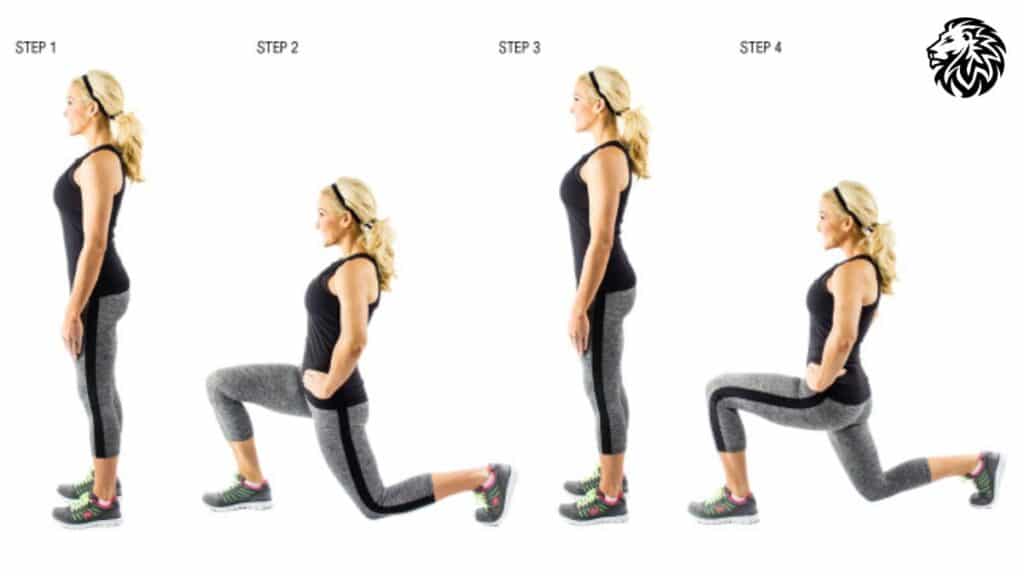
- Description: Lunges are excellent for working the glutes, hamstrings, and quads. They also improve balance and stability.
- Execution: Stand upright and step forward with one leg, lowering your hips until both knees are bent at about a 90-degree angle. Ensure your front knee is directly above your ankle. Push back up to the starting position and repeat with the other leg.
- Tips: For added difficulty, try walking lunges or use dumbbells. Keep your upper body straight and avoid leaning forward.
Deadlifts
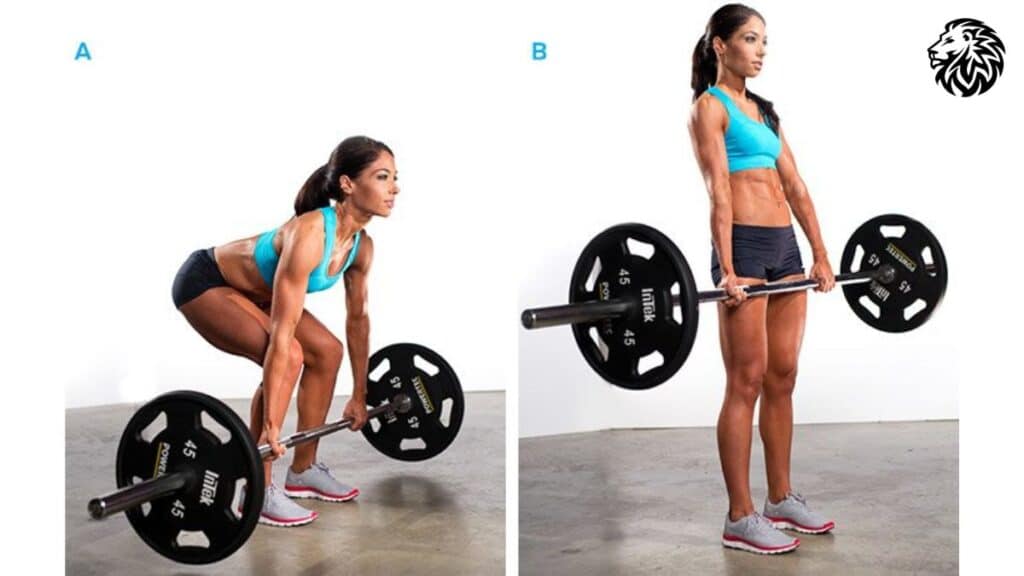
- Description: Deadlifts are a powerful exercise for the entire posterior chain, particularly the glutes and hamstrings.
- Execution: Stand with your feet hip-width apart, a barbell in front of your shins. Bend at your hips and knees, grasp the barbell with an overhand grip. Keeping your back straight, lift the bar by straightening your hips and knees. Lower the bar back to the floor under control.
- Tips: Start with a light weight to perfect your form. Keep your back flat throughout the exercise to avoid strain.
Hip Thrusts
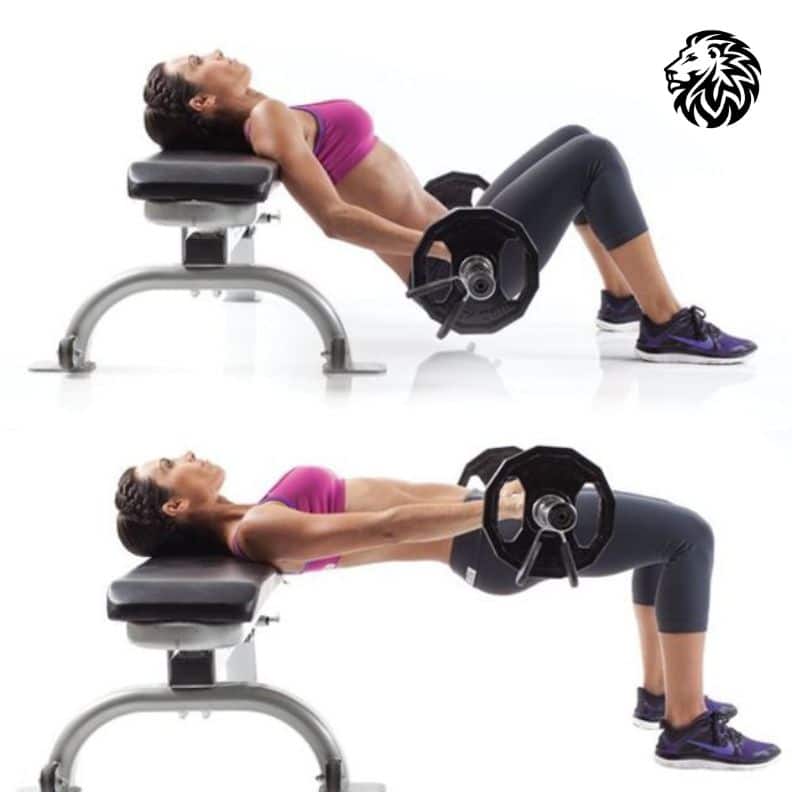
- Description: Hip thrusts specifically target the glutes and are great for building strength and size.
- Execution: Sit on the ground with a bench behind you. Lean against the bench so that it’s just below your shoulder blades. With a barbell over your hips, lift your hips off the ground until your knees, hips, and shoulders form a straight line. Squeeze your glutes at the top before lowering back down.
- Tips: Ensure your feet are flat and shoulder-width apart. Start with low weight to master the technique.
Leg Press
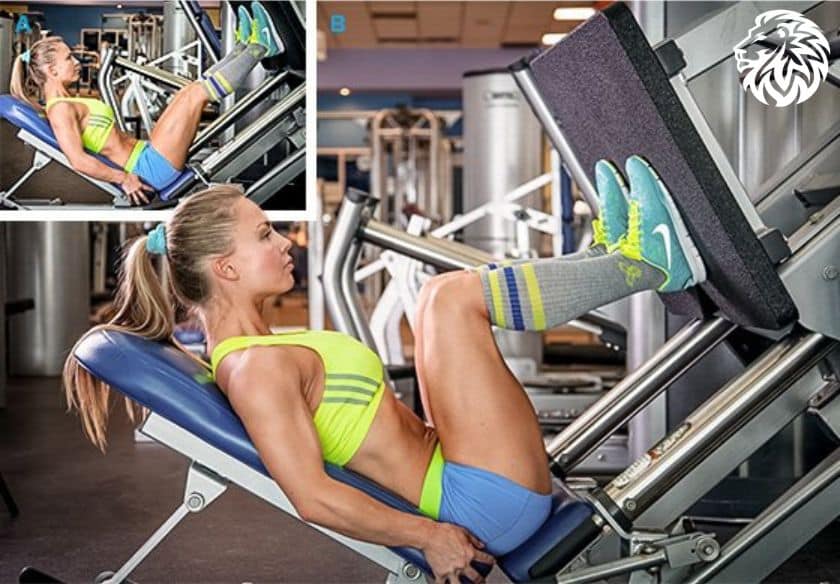
- Description: The leg press is a machine exercise that allows you to target the glutes and legs with less stress on the back.
- Execution: Sit in the leg press machine with your feet on the platform shoulder-width apart. Lower the platform towards your chest by bending your knees and then push it back to the starting position.
- Tips: Don’t lock your knees at the top of the movement, and ensure you don’t lower the platform too far to prevent lower back strain.
Cable Kickbacks

- Description: Cable kickbacks work the gluteus maximus and help in sculpting the rear.
- Execution: Attach an ankle strap to a low cable pulley. Facing the machine, lift your strapped leg backward without bending your lower back. Return to the starting position and repeat.
- Tips: Keep the movements controlled, focusing on the glute contraction. Avoid using excessive weight that causes you to lose form.
Each of these exercises can be adjusted in terms of repetitions, sets, and weights to align with your fitness level and goals. Remember, proper form is key to prevent injury and ensure that you’re effectively targeting your glutes. Feel free to ask a gym trainer for guidance or form checks as you incorporate these exercises into your routine.
Advanced Techniques and Equipment
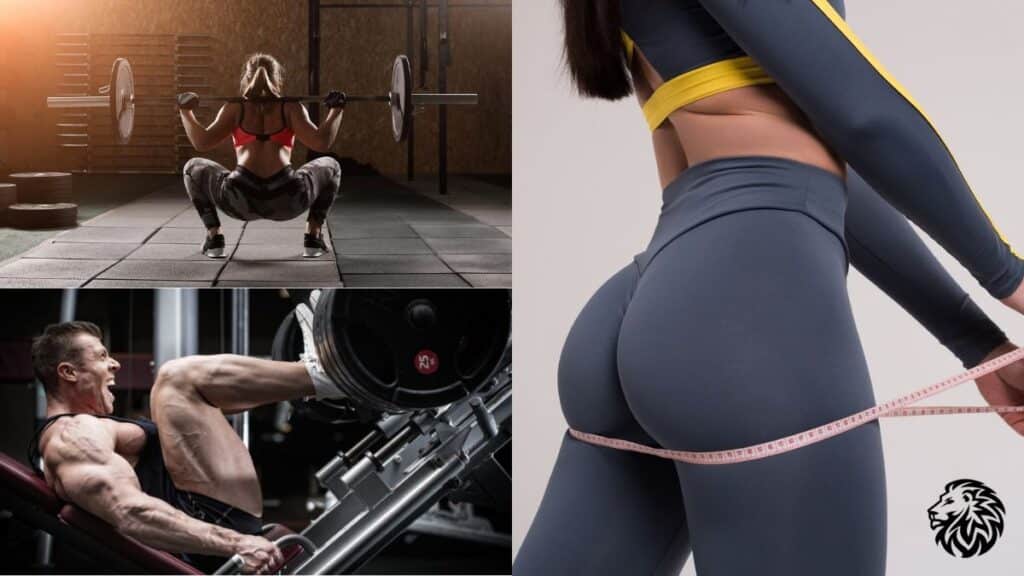
For those who have mastered the basics and are looking to elevate their glute workouts, incorporating advanced techniques and specialized gym equipment can provide the necessary challenge and variation. This section will introduce you to advanced methods and tools that are particularly effective for targeting the glutes, offering seasoned gym-goers an opportunity to further enhance their strength and muscle development.
- Advanced Techniques:
- Progressive Overload: Gradually increase the weight, frequency, or number of repetitions in your workouts. This technique is crucial for continued muscle growth and strength.
- Supersets and Dropsets: Implement supersets (performing two exercises back-to-back with no rest) or dropsets (reducing the weight and continuing the exercise to failure) for increased intensity.
- Eccentric Training: Focus on the eccentric, or lowering phase of exercises like squats and lunges. Slowing down this phase increases muscle tension, leading to greater strength gains.
- Plyometrics: Incorporate explosive movements like jump squats or box jumps to build power in your glutes.
- Specialized Gym Equipment:
- Glute-Ham Developer (GHD): A versatile tool for strengthening the posterior chain, including the glutes, through exercises like hip extensions and back raises.
- Smith Machine: Offers a guided and stable way to perform squats, lunges, and deadlifts, allowing for heavier lifting with reduced risk of losing balance.
- Cable Machines: Useful for a variety of glute exercises, including pull-throughs and cable squats. They offer constant tension on the muscles throughout the movement.
- Leg Curl Machine: Targets the hamstrings and glutes, essential for a balanced lower body development.
- Resistance Bands: Ideal for adding extra resistance to exercises like squats, hip thrusts, and lateral walks. They’re especially good for activating the gluteus medius and minimus.
- Utilizing Equipment for Maximum Benefit:
- Focus on Form and Control: While using equipment, ensure that you maintain proper form and control to effectively target the glutes and prevent injury.
- Variety in Exercises: Use equipment to add variety to your workouts. Different machines and tools can target the glutes in unique ways, contributing to a well-rounded development.
- Consultation with Professionals: If you’re unfamiliar with any piece of equipment, don’t hesitate to ask a trainer for a demonstration to ensure you’re using it correctly and safely.
By incorporating these advanced techniques and making the most out of the gym equipment available, you can significantly enhance the effectiveness of your glute workouts. These methods not only add diversity to your routine but also challenge your muscles in new ways, encouraging further growth and strength. Remember, as you progress and increase the intensity of your workouts, listening to your body and allowing adequate recovery time remains essential for sustainable fitness development.
Incorporating Glute Workouts into a Fitness Regime
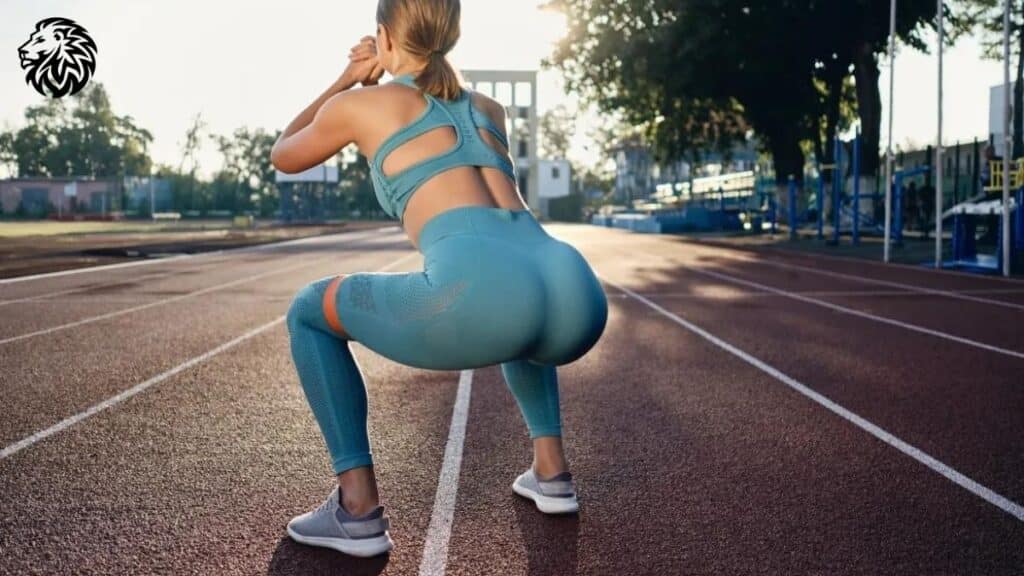
Incorporating glute workouts into your overall fitness regime is not just about focusing on a single muscle group. It’s about creating a balanced and comprehensive fitness plan that addresses all aspects of physical health. Here are some guidelines and expert advice on effectively integrating glute exercises into a broader fitness routine.
- Creating a Balanced Workout Schedule:
- Distribute Focus: Avoid overtraining your glutes. Balance your workout week to include exercises targeting other muscle groups like the core, upper body, and legs.
- Frequency of Glute Workouts: Fitness experts often recommend training your glutes 2-3 times a week. This allows sufficient recovery time and avoids muscle fatigue.
- Variety in Exercises: Incorporate different types of glute exercises in your routine to target all parts of the gluteal muscles. Mixing exercises keeps the routine engaging and effective.
- Combining Cardio and Strength Training:
- Cardiovascular Exercise: Include cardio sessions in your routine. Activities like running, cycling, and HIIT can complement your strength training, improving overall fitness and aiding in fat loss.
- Strength Training for Full Body: Engage in full-body strength training sessions. This ensures balanced muscle development and reduces the risk of muscular imbalances.
- Expert Advice on Muscle Development and Fitness:
- Holistic Approach: Fitness professionals emphasize the importance of a holistic approach. Workouts should address flexibility, strength, cardiovascular health, and endurance.
- Customization to Goals: Tailor your fitness regime based on your specific goals, whether it’s weight loss, muscle building, or improving general fitness.
- Importance of Rest and Recovery: Allocate days for rest and recovery. Overtraining can lead to injuries and setbacks in your fitness journey.
- Nutrition and Hydration:
- Balanced Diet: Complement your workout routine with a balanced diet rich in protein, carbohydrates, healthy fats, and micronutrients. Nutrition plays a crucial role in muscle development and recovery.
- Stay Hydrated: Adequate hydration is crucial for optimal performance and recovery. Ensure you are drinking enough water throughout the day.
- Monitoring Progress and Adjusting Accordingly:
- Track Your Progress: Keep a workout log to monitor your progress. This can include noting the weights used, repetitions, and how you felt during the exercise.
- Adapt and Evolve: Be open to adapting your fitness regime. As you progress, your body will require new challenges to continue advancing.
By following these guidelines, you can effectively integrate glute workouts into your fitness regime in a way that promotes balanced muscle development and overall fitness. Remember, every individual’s body responds differently, so it’s important to listen to your body and adjust your routine as needed for optimal results.
Common Mistakes and How to Avoid Them
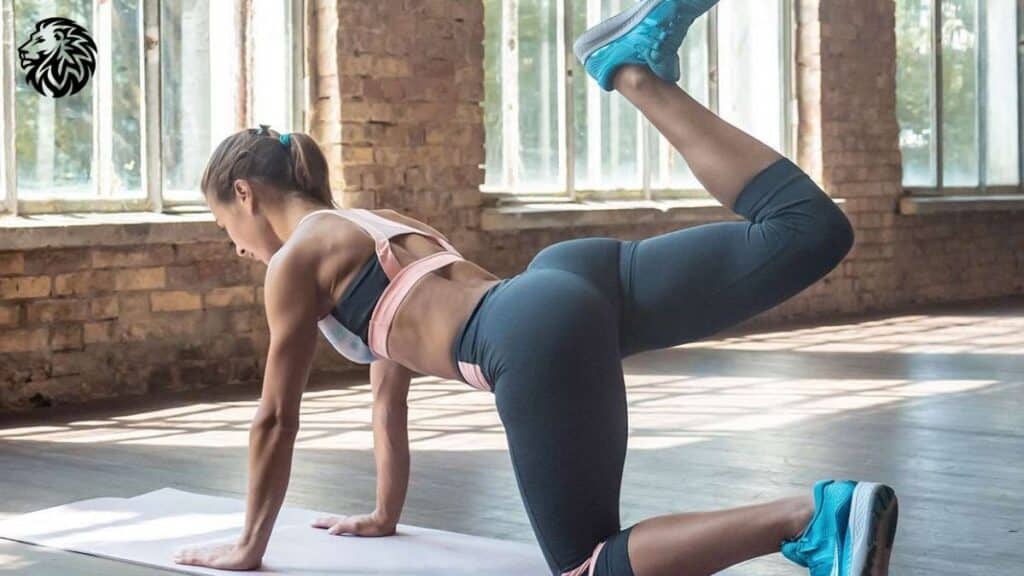
Glute workouts, like any fitness routine, can be prone to common errors. Identifying and correcting these mistakes is crucial for maximizing the effectiveness of your workouts and preventing injuries. Here’s a look at some typical missteps and expert advice on how to avoid them.
- Neglecting Proper Form:
- Common Error: Compromising form, especially when lifting heavier weights.
- Correction: Focus on maintaining proper alignment and technique. Use mirrors to check your form, and consider recording your workouts to evaluate your posture and movements.
- Expert Advice: Start with lighter weights to master the technique. Increase weight only when you can maintain proper form.
- Skipping the Warm-Up:
- Common Error: Jumping into intense workouts without adequately warming up the muscles.
- Correction: Dedicate at least 5-10 minutes to warm up your body with dynamic stretching and light cardio to prepare your muscles and joints.
- Expert Advice: A proper warm-up not only prevents injuries but also improves performance in your workouts.
- Overtraining the Glutes:
- Common Error: Working out the glutes too frequently without adequate rest.
- Correction: Allow at least 48 hours of rest between intense glute workouts for recovery and muscle growth.
- Expert Advice: Listen to your body. Signs of overtraining include prolonged muscle soreness, fatigue, and decreased performance.
- Ignoring Other Muscle Groups:
- Common Error: Focusing solely on glutes and neglecting other muscle groups.
- Correction: Incorporate exercises for other major muscle groups into your routine to ensure balanced development and posture.
- Expert Advice: A well-rounded fitness routine is key to overall body strength and health.
- Failing to Progressively Overload:
- Common Error: Sticking to the same routine without increasing the challenge.
- Correction: Gradually increase the intensity of your workouts by adding weights, altering the number of repetitions, or changing exercises.
- Expert Advice: Continuous challenge is essential for muscle growth and development. Change your routine every 4-6 weeks.
- Improper Breathing:
- Common Error: Holding your breath during exercises.
- Correction: Breathe out on the exertion phase of the exercise and breathe in during the less intense phase.
- Expert Advice: Proper breathing ensures adequate oxygen supply to your muscles and can improve your endurance and performance.
- Neglecting Post-Workout Recovery:
- Common Error: Not focusing on recovery practices post-workout.
- Correction: Engage in cooldown stretches, hydrate well, and consider activities like yoga or foam rolling for muscle recovery.
- Expert Advice: Recovery is just as important as the workout itself for muscle repair and growth.
By being aware of these common mistakes and implementing the recommended corrections and expert advice, you can ensure your glute workouts are safe, effective, and conducive to your overall fitness goals. Remember, consistency, and patience are key in any fitness journey.
Conclusion
In summary, this comprehensive guide has delved into the pivotal role of glute workouts in achieving overall fitness and wellness. We’ve explored the anatomy and function of the glute muscles, the multitude of benefits they offer, from improved posture to enhanced athletic performance, and the importance of incorporating these exercises into a well-rounded fitness regime.
Key Points to Remember:
- Understanding Glute Muscles: Recognize the anatomy and function of the glutes for targeted workouts.
- Benefits of Glute Workouts: Embrace the wide-ranging benefits, including injury prevention, better posture, and enhanced athletic abilities.
- Pre-Workout Considerations: Prioritize warm-ups and tailor workouts to individual fitness levels and goals.
- Effective Glute Exercises: Incorporate a variety of exercises like squats, lunges, and deadlifts, with a focus on proper form and technique.
- Advanced Techniques and Equipment: For seasoned gym-goers, utilize advanced methods and specialized equipment to intensify the workouts.
- Integrating into Fitness Regimes: Balance glute workouts with other fitness activities for overall body strength and wellness.
- Avoiding Common Mistakes: Stay mindful of common errors and follow expert advice for safe and effective workouts.
As you embark or continue on your fitness journey, we encourage you to integrate glute workouts into your routine, considering their significant impact on overall health and fitness. Whether you’re a beginner or an experienced gym-goer, there’s always room to enhance your approach to glute training. Remember, the pursuit of fitness is a personal journey, one that should align with your health and wellness goals. By adopting the practices and principles outlined in this guide, you’re not just working towards a stronger lower body but contributing to a healthier, more balanced lifestyle.
We hope this guide serves as a valuable resource, inspiring you to prioritize your glutes in your fitness endeavors and achieve your personal health and wellness goals. Remember, consistency, patience, and a commitment to learning and improvement are key to a successful fitness journey.
